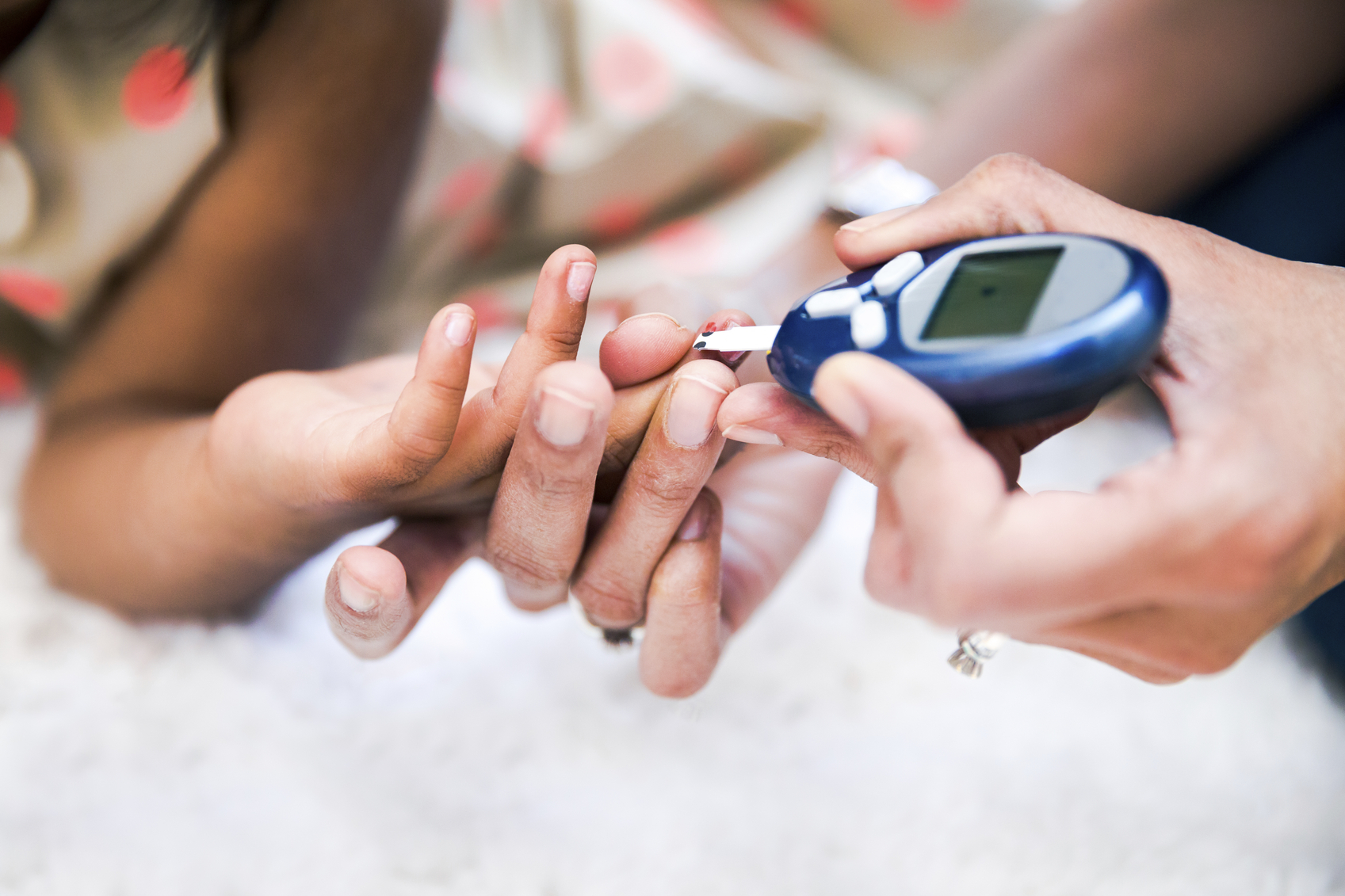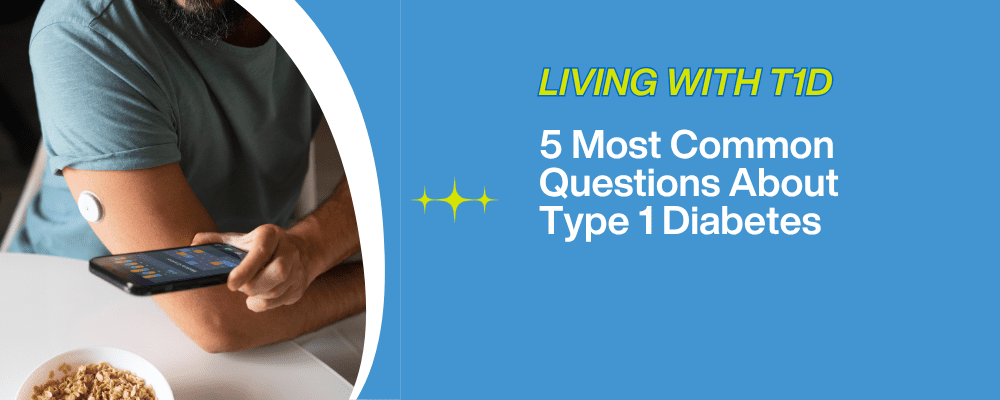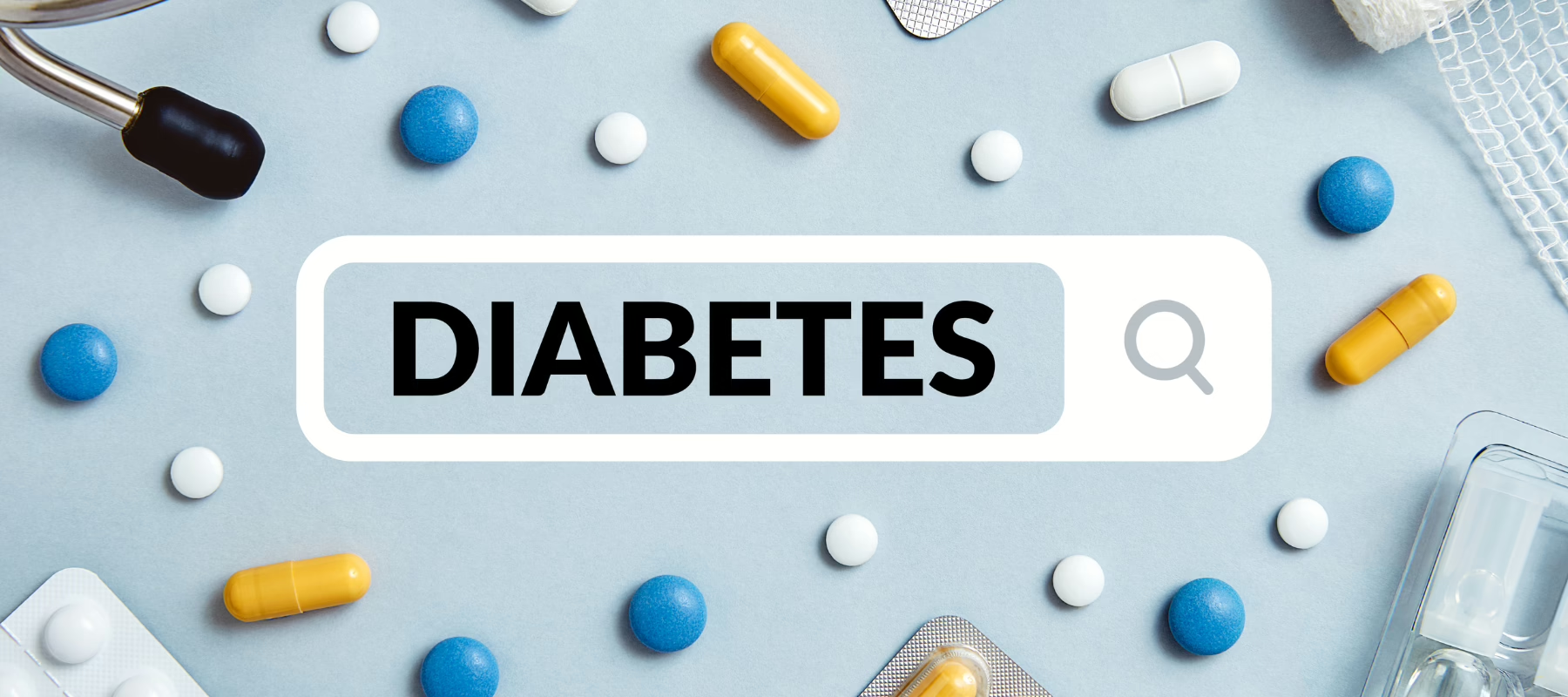Understanding the Two Major Types of Diabetes: Type 1 vs Type 2
We often hear about diabetes, but do we understand this complex health condition? How do we tell the differences between type 1 vs type 2? Sure, they might share a name. And yet they each have distinct characteristics, causes, symptoms, and management methods.
If we have a clearer understanding of these two types of diabetes. We can help those living with the disease, promote awareness, and understand the role that research plays.
In this post, we’ll shed light on type 1 vs type 2 diabetes. We will walk you through their symptoms, risk factors, diagnosis methods, and more. Furthermore, we will delve into current research developments and their implications for the future of diabetes treatment.
For T1D-friendly recipes and tips, make sure to subscribe to our newsletter.
Type 1 Diabetes
Type 1, used to be known as juvenile diabetes. It is a form of diabetes where the body’s immune system attacks and destroys cells.
These insulin-producing beta cells are in the pancreas. This results in a deficiency of insulin. Insulin is a hormone critical for allowing glucose to enter cells, providing them with the energy they need.
But what are the telltale signs that someone might have developed type 1 diabetes? The symptoms often occur suddenly and may include excessive thirst and urination, unexplained weight loss, constant hunger, vision changes, and fatigue.
You need to seek medical advice if you or a loved one experiences these symptoms. It might not be diabetes, but an early diagnosis can prevent severe complications.
So, who is at risk? Some risk factors for developing type 1 diabetes include having a family history of diabetes and certain genetic factors. Nevertheless, anyone can be diagnosed with type 1 diabetes, regardless of lifestyle, fitness level, or body weight.
After being diagnosed patients are advised to monitor their blood sugar levels regularly. They also have to manage their condition with insulin injections or the use of an insulin pump. The insulin pump is a device that delivers insulin constantly throughout the day, helping to keep blood glucose levels stable.
If left unchecked or improperly managed, type 1 diabetes can lead to a life-threatening condition known as diabetic ketoacidosis (DKA). DKA occurs when your body begins to run out of insulin, causing harmful acids to build up in your body. Symptoms include frequent urination, excessive thirst, nausea or vomiting, abdominal pain, weakness or fatigue, and shortness of breath.
Type 2 Diabetes
Type 2, on the other hand, presents a different scenario. This type of diabetes typically develops in adulthood. It has been increasingly seen in younger individuals in recent years, partially due to rising obesity rates.
Unlike type 1, where the body doesn’t produce enough insulin. In type 2 diabetes, the body still produces insulin, but it’s unable to use it effectively. This is known as insulin resistance. Over time, the demand for insulin overpowers the pancreas’ ability to produce it, leading to an insulin deficiency.
The symptoms of type 2 diabetes can be subtle and may develop slowly over several years. They can be similar to those of type 1, such as increased thirst and urination, constant hunger, fatigue, and blurred vision. However, some people with type 2 may also experience slow healing of wounds and frequent infections.
The risk factors for developing type 2 diabetes are more diverse than for type 1. A family history of diabetes, obesity, a sedentary lifestyle, poor diet, and certain ethnicities are all associated with a higher risk of developing type 2. Aging also increases the risk.
After being diagnosed with type 2, the management methods vary depending on the severity of the condition. Lifestyle changes, including a healthier diet, increased physical activity, and weight loss, are usually the first steps. Some people may also need medication to control their blood sugar levels or to deal with insulin resistance.
When we talk about type 2 vs type 1. It’s important to remember the differences not only in the causes and symptoms but also in the management methods.
Understanding these differences allows us to adapt our strategies for prevention, treatment, and support for those living with diabetes. In the following section, we will lay out these differences side by side for a more direct comparison.
Type 1 vs Type 2 Diabetes
In the realm of diabetes, it’s crucial to understand the differences between type 1 and type 2.
They share some similarities – being chronic conditions that affect how the body regulates blood glucose, or blood sugar. However, they differ in causes, symptoms, management strategies, and risk factors.
Origins
Type 1 is an autoimmune disease, and it is still unclear why the immune system attacks its own insulin-producing cells. Meanwhile, type 2 is primarily a lifestyle disease. However, genetics and family history also play a significant role in both types.
Onset
Type 1 diabetes can manifest at any age but is commonly diagnosed in children and young adults. In contrast, type 2 diabetes is more common in adults. Although type 2 diabetes is increasingly diagnosed in younger individuals due to lifestyle changes.
Symptoms
Both types share several symptoms like frequent urination, excessive thirst, fatigue, and blurred vision. The symptoms of type 1 come quickly and are more intense. Type 2 symptoms are more subtle and come slowly over years.
Management
Type 1 diabetes requires regular insulin administration because the body doesn’t produce it. This insulin can be administered through injections or an insulin pump. On the flip side, type 2 diabetes is initially managed through lifestyle changes such as dietary, exercise, and weight loss. However, as the disease progresses, medication or insulin may become necessary.
Risk Factors
Both types share a risk factor in the form of a family history of diabetes. But with type 1, certain genetic markers can indicate a higher risk. As for type 2, lifestyle choices significantly impact the risk.
With type 2 vs type 1, it’s clear that while they share a common name, they have different journeys. By understanding these differences, we can help with either condition and to contribute to research towards improved treatments and a cure. But what does the future look like for diabetes research?
The Future is Bright: Current Research and Advances in Diabetes
While there are significant differences between type 1 and type 2 diabetes. The shared goal among scientists, healthcare professionals, and community advocates is clear. To improve quality of life for individuals with diabetes and, ultimately, to find a cure.
Thanks to advancements in technology and research, progress is being made in our understanding and treatment of both types of diabetes.
Research
Research in type 1 diabetes is steadily progressing. A key focus is on developing an artificial pancreas, a device that can monitor and regulate blood glucose levels automatically, reducing the need for constant vigilance. Stem cell research is another exciting field, with the potential to create insulin-producing cells that could replace those destroyed by the immune system.
Meanwhile, research in type 2 diabetes has a significant emphasis on preventing the disease, given its strong ties to lifestyle factors. Understanding how diet, exercise, and other factors influence insulin resistance and the body’s ability to regulate blood glucose levels is a major research focus. There’s also promising work being done in the field of gene therapy to understand how genetic factors contribute to the development of type 2 diabetes.
But what ties both types of diabetes together is the hope for a future where diabetes can be cured or prevented. Ongoing research is not just about managing the condition but also about learning how we can stop the disease from developing in the first place.
Every discovery, every breakthrough, brings us one step closer to a world where diabetes no longer poses a threat to our health and well-being. To get there, we need continued support and resources for research and development. As a society, we can make a difference by supporting these research initiatives, raising awareness about diabetes, and promoting healthy lifestyle choices.
The path may be long, but with every stride, we’re getting closer to the finish line. Remember, understanding is the first step. From there, we take the journey together, supporting each other until we achieve our goal: a world without diabetes.
Moving Forward
Diabetes is a complex health condition with multiple facets. The differences between type 1 and type 2 are significant, and understanding these differences is crucial for anyone diagnosed with diabetes, their loved ones, healthcare professionals, and the public at large. Awareness and understanding foster empathy and encourage proactive action, leading to better management, improved treatments, and the promise of a future cure.
While there are challenges associated with both type 1 and type 2 diabetes, advancements in medical research and technology provide hope. We are continually progressing towards a world where diabetes is a thing of the past.
By understanding these conditions better, we can support those who are managing them daily, contribute to essential research, and potentially prevent the onset in future generations.
And this is where we all come in. By supporting ongoing research, spreading awareness, and advocating for healthier lifestyles, we contribute to a future where diabetes is fully understood, effectively managed, and potentially curable. At the Diabetic Research Connection, we believe in this future and invite you to join us in our mission.
Thank you for taking the time to read about type 1 and type 2 diabetes. Let’s continue to learn, share, and take action, for ourselves and for those around us. Together, we can make a significant difference. Donate now!
Embracing the Future of Diabetes Research and Advocacy
As we forge ahead, it’s crucial to stay hopeful and engaged in the quest to improve lives impacted by diabetes, whether type 1 or type 2. In this era of scientific discovery and technological advancement, we can contribute to a collective effort to not only manage but conquer diabetes.
Understanding the differences between diabetes type 1 and type 2 is a start, but it’s vital to convert this knowledge into action – through research, community participation, improved healthcare policies, and increased advocacy.
Embracing technology’s role in managing diabetes, like the insulin pump, artificial pancreas, and digital health applications, is also critical. Simultaneously, we must uphold the importance of lifestyle changes in preventing and managing type 2 diabetes. Spreading awareness about these practices is key.
At the heart of it all is support. Every healthcare professional, patient, friend, family member, or just someone who wants to make a difference has a role. Each understanding gesture, fundraiser, research grant, and shared knowledge piece brings us closer to a diabetes-free world. Let’s face this future together, equipped with knowledge, understanding, and a shared vision for a healthier tomorrow. Together, we are stronger, and together, we can make a real difference in the battle against diabetes.
Above all, it’s important to keep in mind just how different these two diseases are, and how much we still have to learn about them. To stay up-to- date on type 1 diabetes research and learn more about managing and living with diabetes, sign up for our newsletter.
If you are looking for information regarding Type 2 Diabetes, we highly recommend looking at Type 2 Digest.




